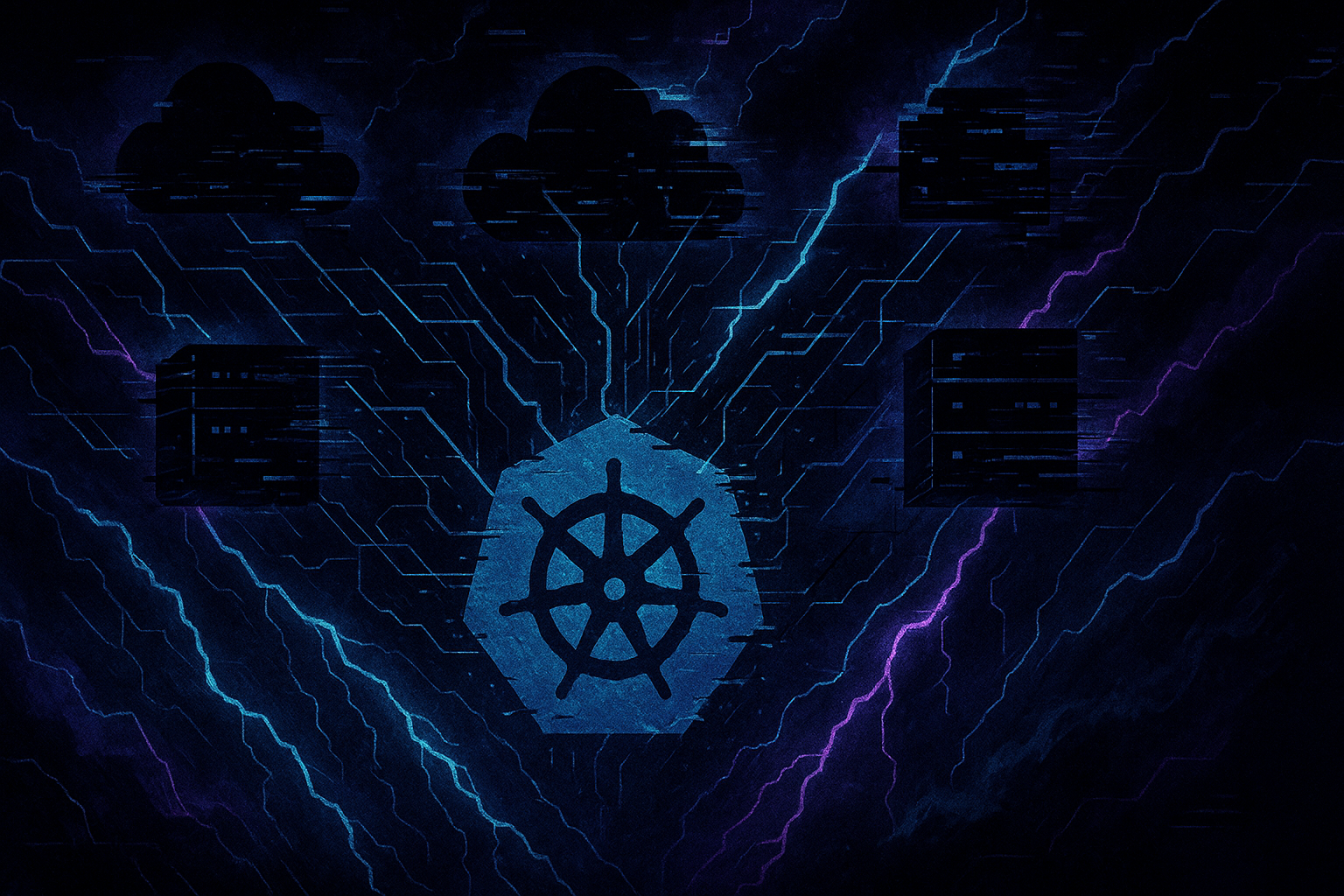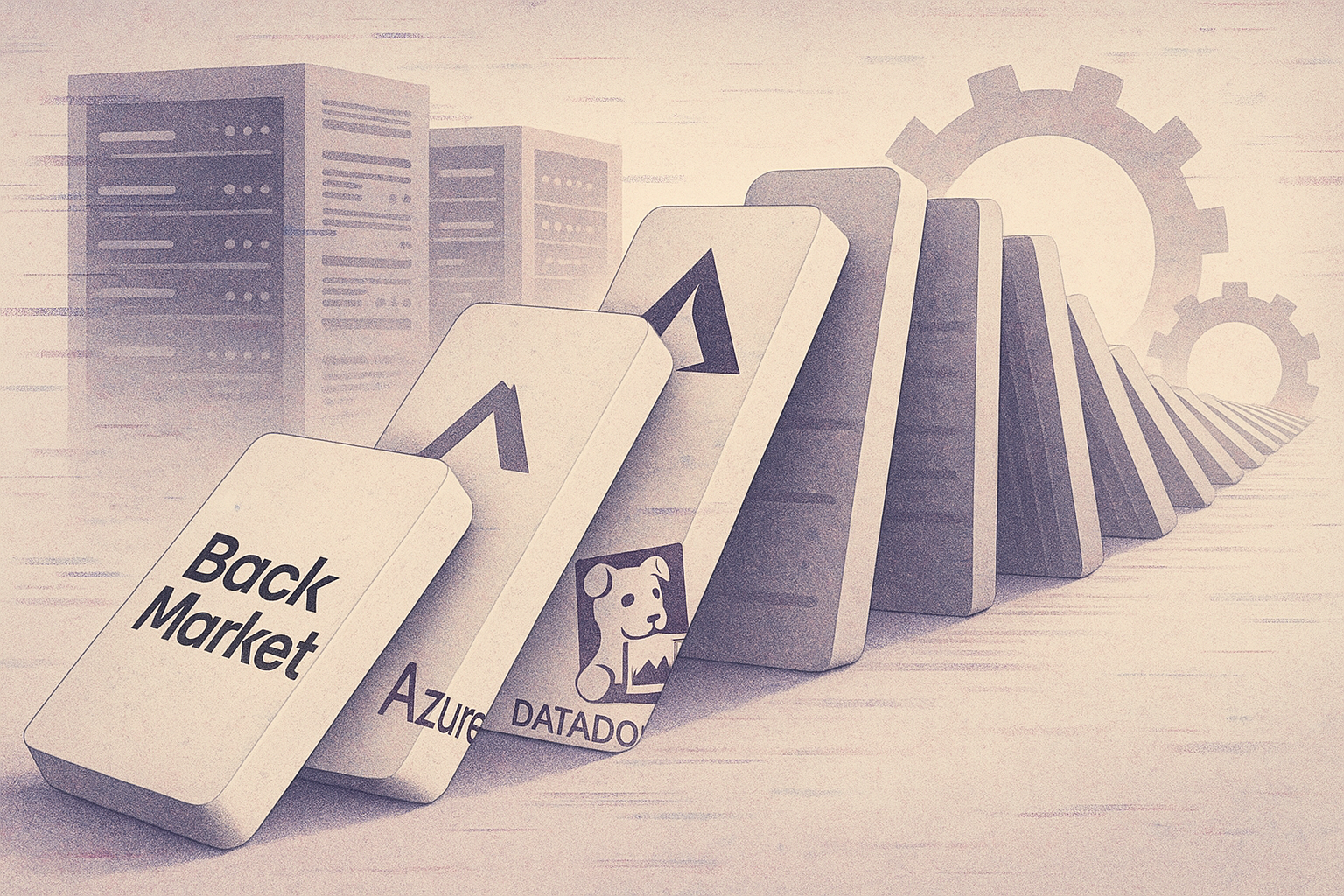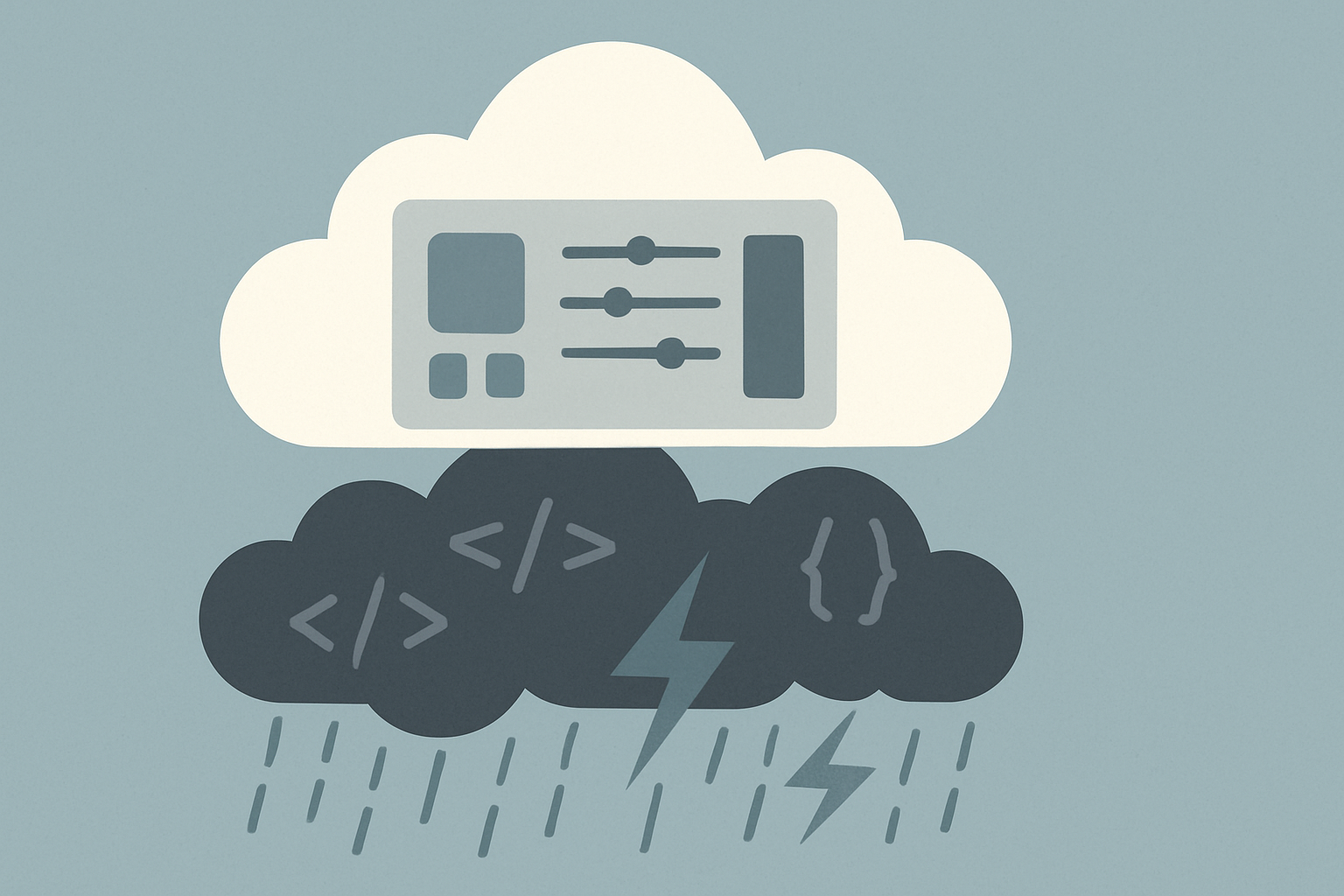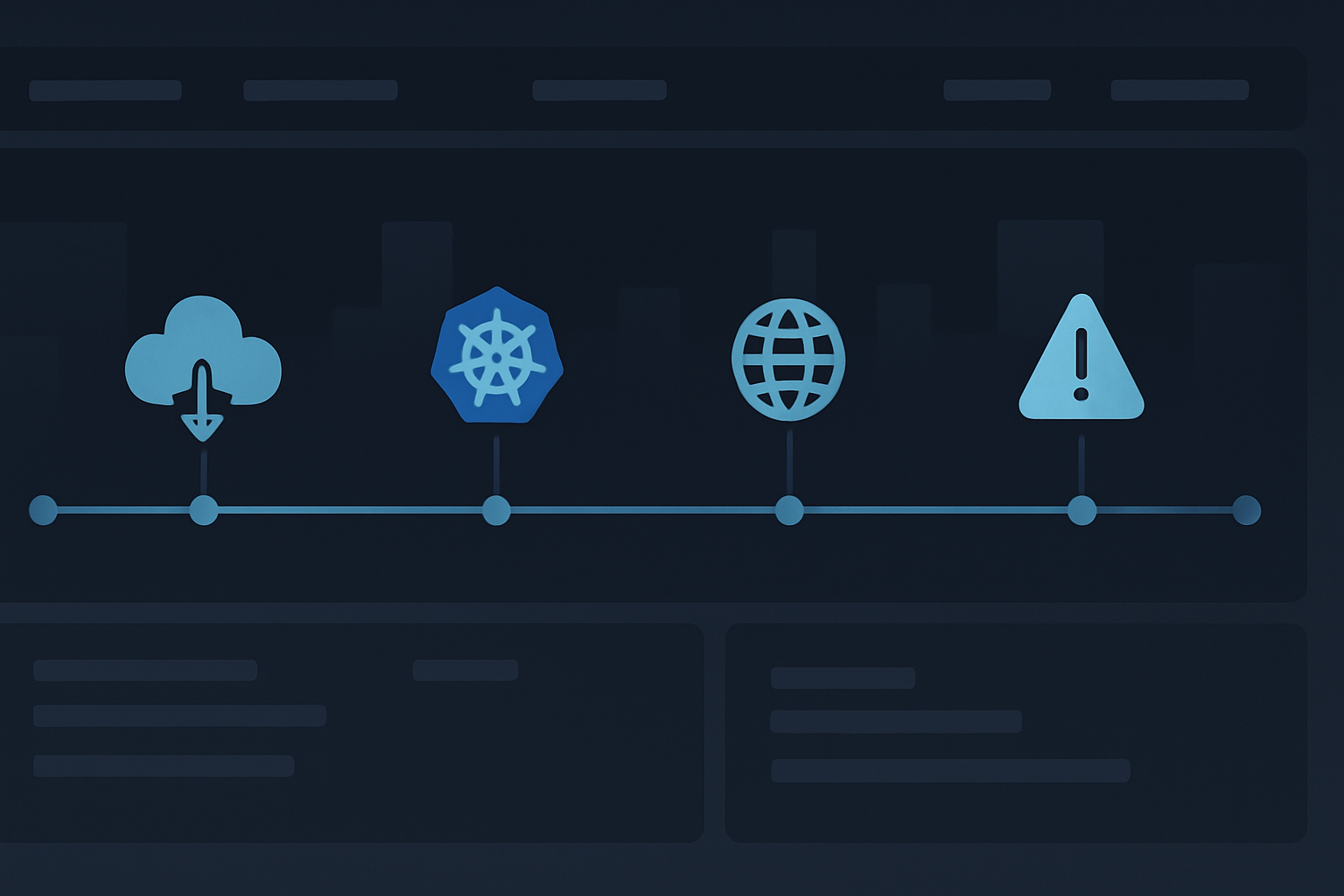
On June 10, 2025, the tech world witnessed a cascade of major outages that brought down some of the most prominent services globally. OpenAI's ChatGPT experienced its longest downtime ever at 12 hours, while Pipedrive, Zapier, and Heroku all suffered significant disruptions. What made this event particularly striking wasn't just the scale—it was the common thread that connected all these failures: a subtle interaction between Linux's systemd and Kubernetes networking that caught even the most experienced engineering teams off guard.
The root cause was deceptively simple yet devastatingly effective. A routine Ubuntu security update triggered an automatic restart of the systemd-networkd service on Kubernetes nodes. Due to a configuration quirk introduced in systemd v248, this restart had an unexpected side effect: it flushed all "foreign" network routes—including the critical routes that Kubernetes CNI plugins had installed to enable pod-to-pod communication.
In practical terms, this meant that containers suddenly lost the ability to:
The symptoms manifested as DNS failures, leading many teams down the wrong troubleshooting path. Engineers spent precious hours investigating DNS configurations when the actual problem lay deeper in the networking stack. As Pipedrive's postmortem noted, they initially suspected their morning DNS configuration changes, wasting critical time before discovering "it wasn't a DNS issue, but an issue with the underlying nodes."
This wasn't an isolated incident. The same systemd behavior had caused outages at:

The recurring nature of these incidents highlights a fundamental challenge: the intersection of Linux system management and Kubernetes networking creates a minefield of potential issues that even seasoned teams struggle to navigate.
These outages expose an uncomfortable truth about self-managed Kubernetes: the platform's power comes with sharp edges. Teams running their own clusters must master not just Kubernetes itself, but also:
As the June 10 incidents demonstrated, a single overlooked default setting (ManageForeignRoutingPolicyRules=yes) can bring down entire production environments. The question many teams are now asking: is the flexibility of DIY Kubernetes worth the operational burden?
This is where Convox's approach to Kubernetes management becomes invaluable. Rather than exposing you to the raw complexity of Kubernetes, Convox provides a carefully curated platform that handles these infrastructure concerns for you.
Convox racks come with pre-configured nodes that include essential safeguards against issues like the systemd networking problem. While rack parameters exist for configuring node types and availability, they don’t directly control system-level routing behavior. Instead, Convox’s curated node configurations and image baselines ensure that affected OS versions or default settings are handled upstream. Our platform ensures that system-level configurations are properly set to prevent conflicts between OS updates and container networking. Additionally, Convox frequently uses Amazon Linux, which was unaffected by this specific Ubuntu systemd bug.
Unlike the automatic, unattended upgrades that triggered the June 10 outages, Convox provides controlled update mechanisms:
$ convox rack update
Updating rack... OKUpdates are tested across our infrastructure before being made available, and you control when they're applied to your production environments. As documented in our CLI Rack Management guide, updates proceed through minor versions to ensure compatibility.
Convox abstracts away the complexity of Kubernetes networking. Instead of managing CNI plugins, network policies, and routing tables, you simply define your services:
services:
web:
port: 3000
health: /check
worker:
resources:
- database
Convox handles all the underlying networking configuration, including:
When issues do occur, Convox provides comprehensive logging and monitoring:
$ convox logs -a myapp
$ convox rack logsThis visibility helps you quickly identify and resolve issues without diving into Kubernetes internals.
Convox continuously monitors for known issues and automatically applies preventive measures. For instance, our platform includes:
By using Convox, teams can redirect the time and energy they would spend on infrastructure management toward building their products. Consider the companies affected by the June 10 outages:
With Convox, these types of system-level issues are proactively mitigated through our infrastructure controls and image management, drastically reducing the chance of impact.
Whether you're already using Convox or considering it, here are key practices for maintaining resilient production systems:
The June 10 incidents prove that even expert teams can be caught off guard by infrastructure complexity. Managed platforms like Convox eliminate entire categories of potential failures.
Convox provides integrated monitoring and alerting capabilities built directly into the platform:
# View application level logs
$ convox logs -a myapp
# View service level logs
$ convox logs -a myapp -s myserviceOur Console monitoring suite includes:
For full details on how Convox handles metrics and alerting, see our Monitoring Documentation or read the Zero-Config Monitoring Guide on our blog.
Convox supports high availability configurations out of the box:
$ convox rack params set high_availability=trueUse Convox's deployment workflows and isolated environments to test changes in staging before production:
$ convox deploy -a myapp -r staging
$ convox deploy -a myapp -r productionTo better understand the scale and complexity of the June 10 outages, here's a simplified timeline of how the incident unfolded across different organizations:
| Time (UTC) | Event |
|---|---|
| 02:15 | Ubuntu security update begins rolling out |
| 02:45 | First reports of DNS issues at Pipedrive |
| 03:00 | ChatGPT begins experiencing intermittent failures |
| 03:30 | Heroku support tickets spike; engineers investigate DNS |
| 04:00 | Multiple services report complete pod-to-pod communication failure |
| 06:00 | Root cause identified as systemd route flushing |
| 08:00 | Workarounds begin deployment across affected services |
| 14:15 | ChatGPT fully restored after 12-hour outage |

This timeline illustrates how quickly a seemingly minor OS update can cascade into a major incident affecting multiple services worldwide.
The June 10, 2025 outages serve as a watershed moment for the industry. They highlight that as our infrastructure becomes more complex, the risk of subtle interactions causing major failures increases exponentially. Convox represents a different approach—one where the platform absorbs this complexity, allowing development teams to focus on what they do best: building great applications. By providing a carefully designed abstraction over Kubernetes, Convox delivers the power of modern container orchestration without the operational overhead.
The lesson from June 10 is clear: infrastructure complexity is a liability that can strike even the most prepared teams. While some organizations may need the flexibility of raw Kubernetes, most would benefit from a platform that handles the undifferentiated heavy lifting. Convox offers exactly that—a production-ready platform that protects you from the sharp edges of Kubernetes while delivering all its benefits. In a world where a single systemd configuration can bring down your entire infrastructure, having a trusted platform partner isn't just convenient—it's essential.
Ready to protect your applications from infrastructure complexity? Get started Free with Convox today and join the growing number of teams who've chosen reliability over raw complexity.
To learn how Convox simplifies Kubernetes management and hardens your infrastructure by default, explore our documentation or contact us to schedule a personalized demo. Free white-glove onboarding is available for all new accounts.
